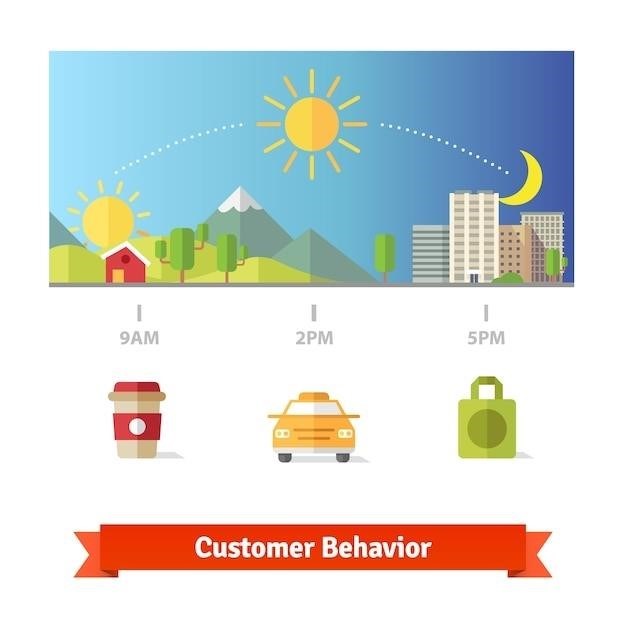kalevol weather station manual

This manual provides comprehensive instructions for setting up, using, and maintaining your KALEVOL Weather Station. With its advanced features and user-friendly interface, this weather station empowers you to monitor and understand the climate around you.
This manual covers topics such as unboxing and preparation, connecting wireless sensors, powering the station, navigating the menu, reading data, setting alarms, troubleshooting common issues, maintenance and care, warranty information, and contact details.
We encourage you to read this manual carefully before using your weather station to ensure optimal performance and enjoyment.
Introduction
Welcome to the world of smart home technology with the KALEVOL Weather Station! This comprehensive guide will equip you with the knowledge and skills to fully utilize your KALEVOL Weather Station. This advanced device provides detailed insights into your local weather conditions, empowering you to make informed decisions about your daily activities and outdoor plans.
KALEVOL Technology is a young and innovative company dedicated to developing smart home technology products that enhance your lifestyle. Our weather stations are designed to be user-friendly and reliable, providing accurate and timely weather data right at your fingertips. This manual will guide you through the setup, operation, and maintenance of your KALEVOL Weather Station, ensuring a seamless and enjoyable experience.
We understand the importance of accurate and reliable weather information, especially in today’s changing climate. Our weather station is equipped with advanced sensors and technology to provide you with a comprehensive picture of your local weather conditions. From temperature and humidity readings to wind speed and rainfall data, our weather station offers a wealth of information that can be used to make informed decisions about your daily life.
Product Overview
The KALEVOL Weather Station is a versatile and user-friendly device designed to provide you with comprehensive weather information for your home and surroundings. It is equipped with a variety of sensors that measure key weather parameters, enabling you to stay informed about the current and forecasted conditions.
The station’s large color display showcases a wealth of information, including indoor and outdoor temperature and humidity, atmospheric pressure, wind speed and direction, rainfall data, weather forecast, moon phase, sunrise and sunset times, tide level, and more. With its intuitive menu navigation and customizable settings, the KALEVOL Weather Station makes it easy to access and understand the data you need.
The KALEVOL Weather Station is also designed for convenience. Its wireless sensors allow for flexible placement, providing accurate readings even in remote areas of your property. The station can be powered by a DC adapter or batteries, offering flexibility in placement and operation. Whether you’re a home owner, gardener, or simply interested in understanding the weather around you, the KALEVOL Weather Station is a valuable tool for making informed decisions and enjoying a more informed lifestyle.
Features
The KALEVOL Weather Station is packed with features designed to provide you with a comprehensive understanding of your local weather conditions. It boasts a wide range of capabilities, including⁚
- Indoor and Outdoor Temperature and Humidity Monitoring⁚ Accurately track the temperature and humidity levels both inside and outside your home, helping you maintain optimal comfort and prevent potential issues.
- Atmospheric Pressure Index⁚ Monitor changes in atmospheric pressure, providing insights into potential weather shifts and helping you prepare for upcoming conditions.
- Rainfall Data⁚ Track rainfall accumulation, offering valuable information for gardening, irrigation, and weather forecasting.
- Wind Speed and Direction⁚ Measure the speed and direction of the wind, providing insights into weather patterns and potential hazards.
- Weather Forecast⁚ Receive a 12-hour weather forecast, helping you plan your day and prepare for upcoming conditions.
- Moon Phase, Sunrise and Sunset Times, Tide Level⁚ Access additional information relevant to various activities, including outdoor recreation, gardening, and marine activities.
- Alarm Clock and Snooze Function⁚ Set daily alarms and enjoy a convenient snooze option for a peaceful morning routine.
- Atomic Clock⁚ Ensure accurate timekeeping with the built-in atomic clock, eliminating the need for manual adjustments.
- Wireless Sensors⁚ Enjoy the flexibility of placing sensors in various locations around your property for accurate readings across your entire yard.
- Large Color Display⁚ Easily read all the essential weather information with the station’s large, vibrant color display.
These features combine to create a powerful and informative weather station that provides you with a comprehensive view of your local climate.
Setting Up Your Weather Station
Setting up your KALEVOL Weather Station is a straightforward process that allows you to quickly begin monitoring your local weather conditions. Follow these steps to get your station up and running⁚
Unboxing and Preparation
Carefully unpack the contents of the box, ensuring all components are present.
Familiarize yourself with the components, including the main station unit, wireless sensors, power adapter, user manual, and any additional accessories.
Connecting the Wireless Sensors
Locate the wireless sensors and ensure they have fresh batteries installed.
Position the sensors in strategic locations around your property for optimal signal reception.
Pair the sensors with the main station unit following the instructions in the user manual.
Ensure the sensors are placed in open areas, away from obstructions and interference.
Powering the Station
Plug the power adapter into the main station unit.
Connect the power adapter to a standard electrical outlet.
The station will power on and begin searching for signals from the wireless sensors.
Once the station has powered on and connected to the wireless sensors, you are ready to begin using your KALEVOL Weather Station to monitor your local weather conditions.
Unboxing and Preparation
Before you begin setting up your KALEVOL Weather Station, it’s important to carefully unpack and prepare the components. Here’s what you need to do⁚
- Open the Box⁚ Carefully open the box containing your KALEVOL Weather Station, making sure not to damage any of the components.
- Identify Components⁚ Familiarize yourself with all the components included in the package. These typically include the main station unit, wireless sensors (usually a temperature/humidity sensor and a rain gauge), a power adapter, a user manual, and possibly additional accessories like a wind speed sensor or a UV sensor.
- Check for Completeness⁚ Ensure all components are present and accounted for. If any item is missing or damaged, contact KALEVOL customer support immediately.
- Read the User Manual⁚ Before proceeding with the setup process, carefully read the user manual provided with your weather station. This manual contains essential information about the features, functions, and operation of your specific model.
- Prepare the Sensors⁚ If your wireless sensors require batteries, ensure they are fresh and properly installed. Refer to the user manual for battery type and installation instructions.
By completing these steps, you’ll ensure a smooth and successful setup process for your KALEVOL Weather Station.
Connecting the Wireless Sensors
Connecting the wireless sensors to your KALEVOL Weather Station is a straightforward process. Here’s how to do it⁚
- Locate the Sensor⁚ Find the wireless sensor(s) included in your KALEVOL Weather Station package. These typically include a temperature/humidity sensor and a rain gauge, but your model may include additional sensors like a wind speed sensor or a UV sensor.
- Power Up the Sensor⁚ If your wireless sensor requires batteries, ensure they are fresh and properly installed according to the instructions in the user manual.
- Choose a Location⁚ Select a suitable location for each sensor, taking into account the type of data it measures. For example, place the temperature/humidity sensor in a shaded area that is representative of the overall outdoor temperature and humidity. Ensure the rain gauge is positioned in an open area that receives direct rainfall.
- Pair the Sensor⁚ Refer to the user manual for specific instructions on how to pair the wireless sensors to your KALEVOL Weather Station. This usually involves pressing a pairing button on both the station unit and the sensor.
- Confirm Connection⁚ Once paired, your KALEVOL Weather Station should automatically detect and display data from the wireless sensors. Refer to the user manual for details on how to confirm the connection and troubleshoot any issues.
By following these steps, you can successfully connect your wireless sensors to your KALEVOL Weather Station and start gathering valuable weather data.
Powering the Station
Your KALEVOL Weather Station can be powered in multiple ways, offering flexibility and convenience. Here’s a guide to the available options⁚
- AC Adapter⁚ The most common method is using the provided AC adapter. Plug one end of the adapter into the power outlet and the other end into the designated port on your weather station. This provides a continuous power supply, ensuring consistent operation.
- Batteries⁚ Some KALEVOL Weather Stations offer the option of using batteries as a backup power source. Refer to your user manual for the specific battery type and configuration required. Batteries are useful for maintaining operation even during power outages.
- Solar Panel (Optional)⁚ Some advanced models may include a solar panel option. This allows for self-sufficiency by harnessing solar energy to power the station. Consult the user manual for details on solar panel compatibility and installation.
- Placement⁚ Once powered, place your weather station in a suitable location. Ensure it’s in a well-ventilated area, away from direct sunlight or extreme temperatures. This will help prevent overheating and ensure accurate readings.
Choose the power source that best suits your needs and preferences. Remember to refer to the user manual for specific instructions and safety precautions related to each power option.
Using the Weather Station
Once your KALEVOL Weather Station is set up, you can start using its various features to monitor and understand your local weather conditions. Here’s a guide to using the station effectively⁚
- Navigating the Menu⁚ Your weather station likely has a user-friendly menu system accessible through buttons on the device. Use the buttons to navigate through the different sections, such as temperature, humidity, pressure, wind speed, rainfall, and more. Refer to your user manual for a detailed explanation of the menu structure and button functions.
- Reading Data⁚ The KALEVOL Weather Station displays various weather data points, including current conditions and historical readings. Consult the manual for specific instructions on how to interpret the displayed information. For example, you might see temperature readings in Celsius or Fahrenheit, humidity levels as a percentage, wind speed in kilometers per hour or miles per hour, and so on.
- Setting Alarms⁚ Many weather stations allow you to set alarms for specific weather conditions. For example, you could set an alarm to alert you if the temperature drops below a certain point or if there’s a high chance of precipitation. This can be helpful for planning activities, protecting your property, or simply staying informed about potential weather hazards.
- Troubleshooting Common Issues⁚ If you encounter any problems with your weather station, consult the user manual for troubleshooting tips. Common issues might include inaccurate readings, connectivity problems, or battery depletion.
Experiment with the different features of your KALEVOL Weather Station to discover how it can best meet your needs for weather monitoring and awareness.
Navigating the Menu
The KALEVOL Weather Station typically features a user-friendly menu system that allows you to access different functions and settings. To navigate the menu, you’ll use the buttons on the device. The specific button arrangement and functions may vary depending on your model, but generally, you’ll find buttons for⁚
- Up/Down: These buttons are used to scroll through the menu options or adjust values.
- Select/Enter: This button is used to confirm your selections or enter a new value.
- Back/Exit: This button lets you return to the previous menu level or exit a specific function.
When you press the “Select/Enter” button, you’ll typically be taken to a new screen where you can view or modify the settings for that specific function. You can then use the “Up/Down” buttons to scroll through the available options and the “Select/Enter” button to confirm your choice. The “Back/Exit” button allows you to go back to the previous screen or exit the menu altogether.
Your user manual will provide a detailed explanation of the menu structure and button functions for your specific KALEVOL Weather Station model. Familiarize yourself with the menu navigation to access all the features and settings your station offers.
Reading Data
The KALEVOL Weather Station provides a comprehensive overview of your local weather conditions, displaying various data points on its screen. To read the data, you’ll simply need to navigate to the relevant screens within the menu. The specific data displayed may differ depending on your model, but generally, you can expect to find⁚
- Indoor and Outdoor Temperature⁚ The station will show you the current temperature readings for both your indoor and outdoor environments.
- Humidity⁚ You can view the relative humidity levels for both indoor and outdoor locations.
- Atmospheric Pressure⁚ This reading indicates the current air pressure, which can be helpful in predicting weather changes.
- Weather Forecast⁚ Some KALEVOL Weather Stations may offer a basic weather forecast for the next 12 hours or longer, providing insights into upcoming weather conditions.
- Wind Speed and Direction⁚ If equipped with a wind sensor, your station will display the current wind speed and direction.
- Rainfall⁚ A rain gauge sensor will collect and display data on the amount of rainfall received.
- Moon Phase⁚ You might find information about the current moon phase, which can be useful for planning outdoor activities.
- Sunrise and Sunset Times⁚ Your station could provide the times for sunrise and sunset, helping you plan your day.
The KALEVOL Weather Station typically displays this data in a clear and organized manner, making it easy to understand and interpret. Remember to consult your user manual for specific instructions on how to access and read the data on your particular model.
Setting Alarms

The KALEVOL Weather Station allows you to set alarms to alert you to specific weather conditions or time-based events. This feature can be particularly useful for keeping track of temperature fluctuations, rainfall, or simply waking up to a gentle alarm sound. To set an alarm, follow these general steps, which may vary slightly depending on your specific model⁚
- Access the Alarm Menu⁚ Navigate to the alarm settings section using the station’s buttons or menu system. This may involve pressing a specific button or scrolling through the menu options.
- Select Alarm Type⁚ Choose the type of alarm you want to set. This could include options like a temperature alarm (when the temperature reaches a certain threshold), a humidity alarm, a rainfall alarm, or a standard time-based alarm.
- Configure Alarm Settings⁚ Set the specific parameters for your alarm. For temperature alarms, you’ll need to enter the desired temperature threshold. For humidity alarms, you’ll set the humidity level. For rainfall alarms, you’ll specify the amount of rainfall that triggers the alarm. For time-based alarms, you’ll set the desired time of day.
- Activate the Alarm⁚ Once you’ve configured the settings, activate the alarm by pressing the appropriate button or selecting the “enable” option in the menu. The alarm will now be active and will sound when the specified conditions are met.
Refer to your user manual for detailed instructions on setting and managing alarms on your specific KALEVOL Weather Station model.




